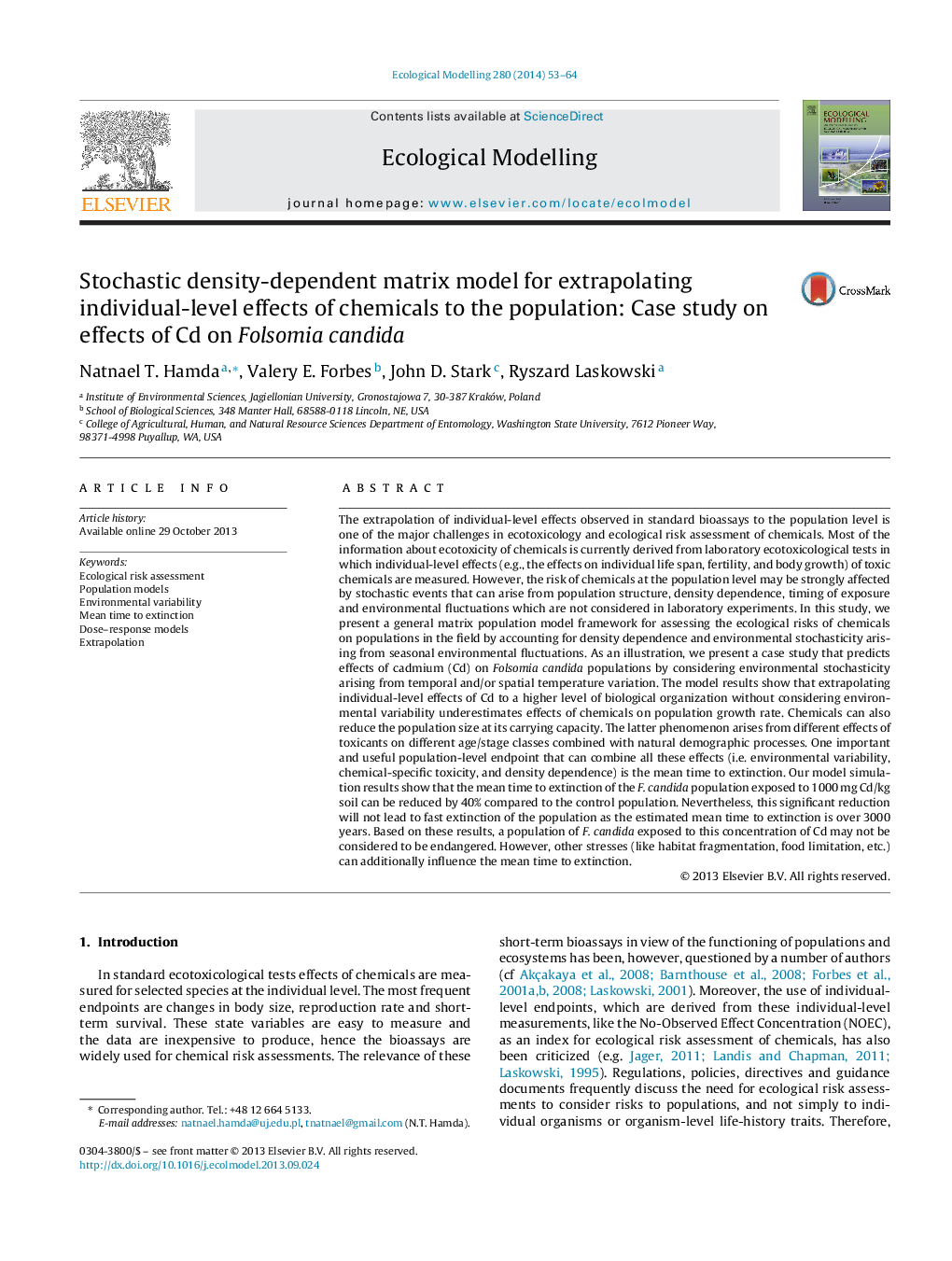| Article ID | Journal | Published Year | Pages | File Type |
|---|---|---|---|---|
| 6296851 | Ecological Modelling | 2014 | 12 Pages |
Abstract
The extrapolation of individual-level effects observed in standard bioassays to the population level is one of the major challenges in ecotoxicology and ecological risk assessment of chemicals. Most of the information about ecotoxicity of chemicals is currently derived from laboratory ecotoxicological tests in which individual-level effects (e.g., the effects on individual life span, fertility, and body growth) of toxic chemicals are measured. However, the risk of chemicals at the population level may be strongly affected by stochastic events that can arise from population structure, density dependence, timing of exposure and environmental fluctuations which are not considered in laboratory experiments. In this study, we present a general matrix population model framework for assessing the ecological risks of chemicals on populations in the field by accounting for density dependence and environmental stochasticity arising from seasonal environmental fluctuations. As an illustration, we present a case study that predicts effects of cadmium (Cd) on Folsomia candida populations by considering environmental stochasticity arising from temporal and/or spatial temperature variation. The model results show that extrapolating individual-level effects of Cd to a higher level of biological organization without considering environmental variability underestimates effects of chemicals on population growth rate. Chemicals can also reduce the population size at its carrying capacity. The latter phenomenon arises from different effects of toxicants on different age/stage classes combined with natural demographic processes. One important and useful population-level endpoint that can combine all these effects (i.e. environmental variability, chemical-specific toxicity, and density dependence) is the mean time to extinction. Our model simulation results show that the mean time to extinction of the F. candida population exposed to 1000Â mg Cd/kg soil can be reduced by 40% compared to the control population. Nevertheless, this significant reduction will not lead to fast extinction of the population as the estimated mean time to extinction is over 3000 years. Based on these results, a population of F. candida exposed to this concentration of Cd may not be considered to be endangered. However, other stresses (like habitat fragmentation, food limitation, etc.) can additionally influence the mean time to extinction.
Keywords
Related Topics
Life Sciences
Agricultural and Biological Sciences
Ecology, Evolution, Behavior and Systematics
Authors
Natnael T. Hamda, Valery E. Forbes, John D. Stark, Ryszard Laskowski,
